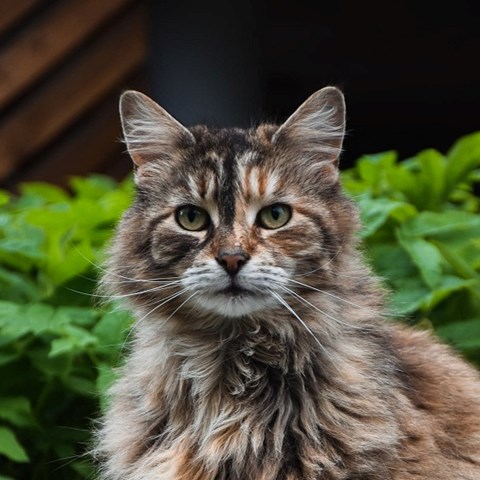Contact
Karolina Engdahl
Doctoral Student, Clinical Veterinarian at the Department of Clinical Sciences; Veterinary Epidemiology Unit
Telephone: +4618671892
E-mail: karolina.engdahl@slu.se

The aim of this study was to describe the characteristics and long-term outcome of surgically and conservatively treated cats with cranial cruciate ligament disease (CCLD). A retrospective cohort study of cats with CCLD, diagnosed at two university animal hospitals between January 2011 and December 2016, was performed. Signalment, history, treatment and follow-up information were retrieved.
Cat owners were contacted for additional long-term follow-up information. The cases were divided into two groups: one conservatively managed and one surgically treated with the lateral fabellotibial suture technique. A quality of life questionnaire, the Feline Musculoskeletal Pain Index (FMPI), was distributed to the owners of cats alive at follow-up for assessment of chronic pain as a long-term outcome. Univariable statistical methods were used to evaluate the data.
Fifty cats were identified and were followed for a median of 41 months after diagnosis of CCLD. Seven cats (14%) developed bilateral CCLD. Twenty-eight cats (56%) were treated conservatively and 22 (44%) surgically. All surgically treated cats in which arthrotomy was performed (19/22) had total cranial cruciate ligament rupture and 9/19 (47%) had meniscal injuries. Postoperative surgical complications were recorded in 6/22 cats (27%). Owners of 24/29 (83%) cats still alive at follow-up completed the FMPI questionnaire. The conservatively treated cats had a lower FMPI score, indicating less chronic pain, than those cats treated surgically (P = 0.017).
Conservatively treated cats with CCLD experienced less chronic pain at long-term follow-up than surgically treated cats. Bilateral disease is not uncommon in cats with CCLD.
https://doi.org/10.1177/1098612X19837436
Boge, G.S., Engdahl, K., Moldal, E.R. & Bergström, A. (2020). Cranial cruciate ligament disease in cats: an epidemiological retrospective study of 50 cats (2011–2016). Journal of Feline Medicine and Surgery, 22(4), pp. 277-284.
Karolina Engdahl
Doctoral Student, Clinical Veterinarian at the Department of Clinical Sciences; Veterinary Epidemiology Unit
Telephone: +4618671892
E-mail: karolina.engdahl@slu.se